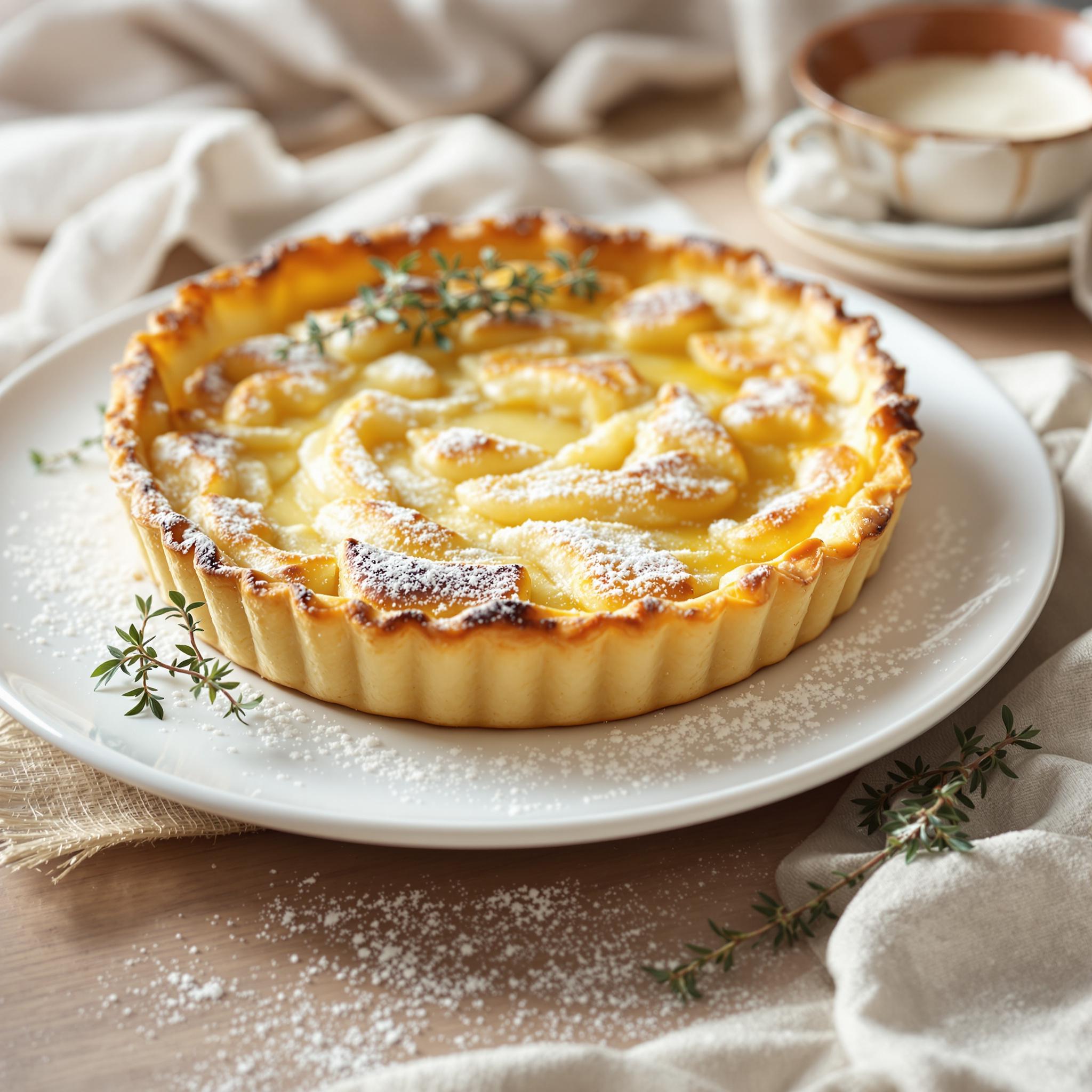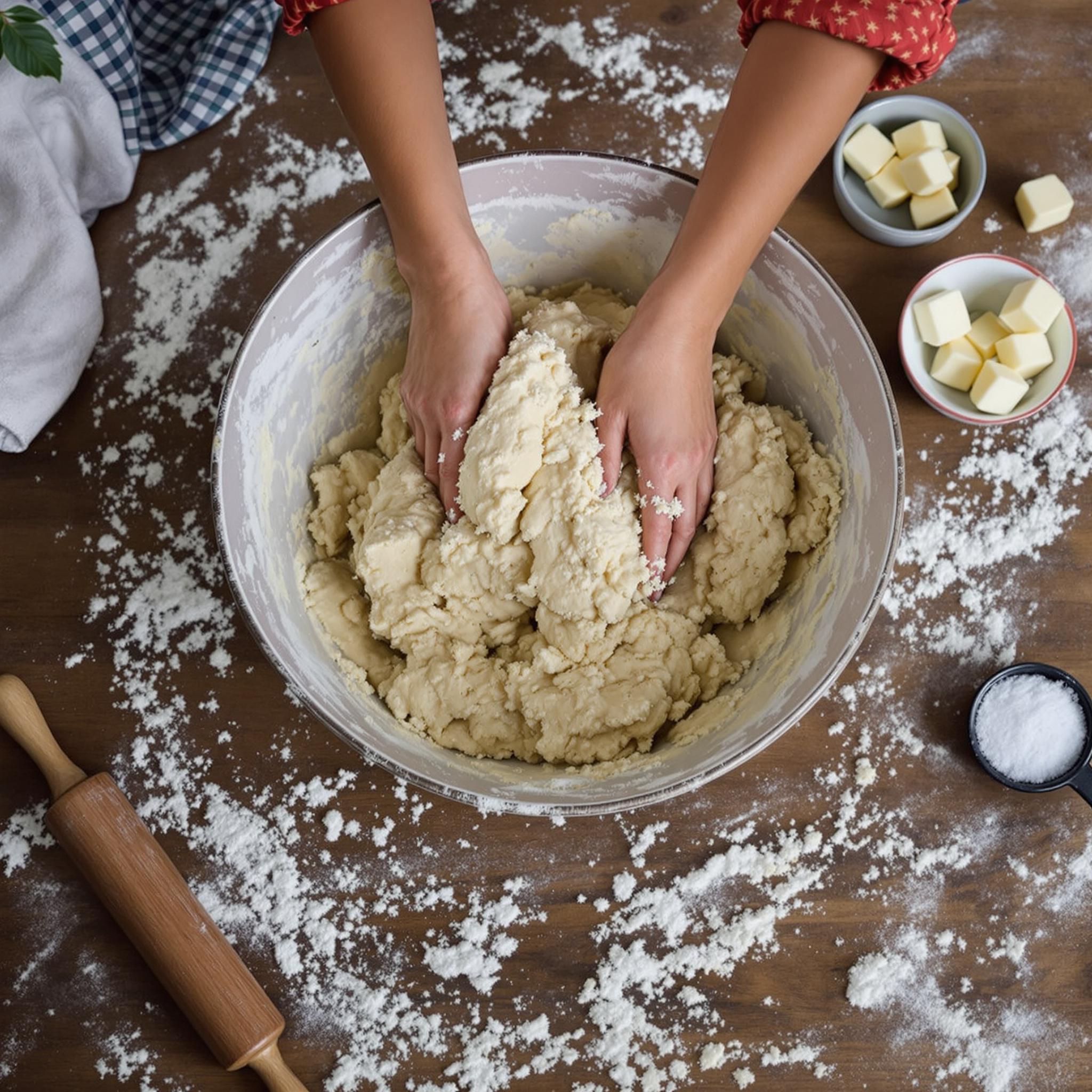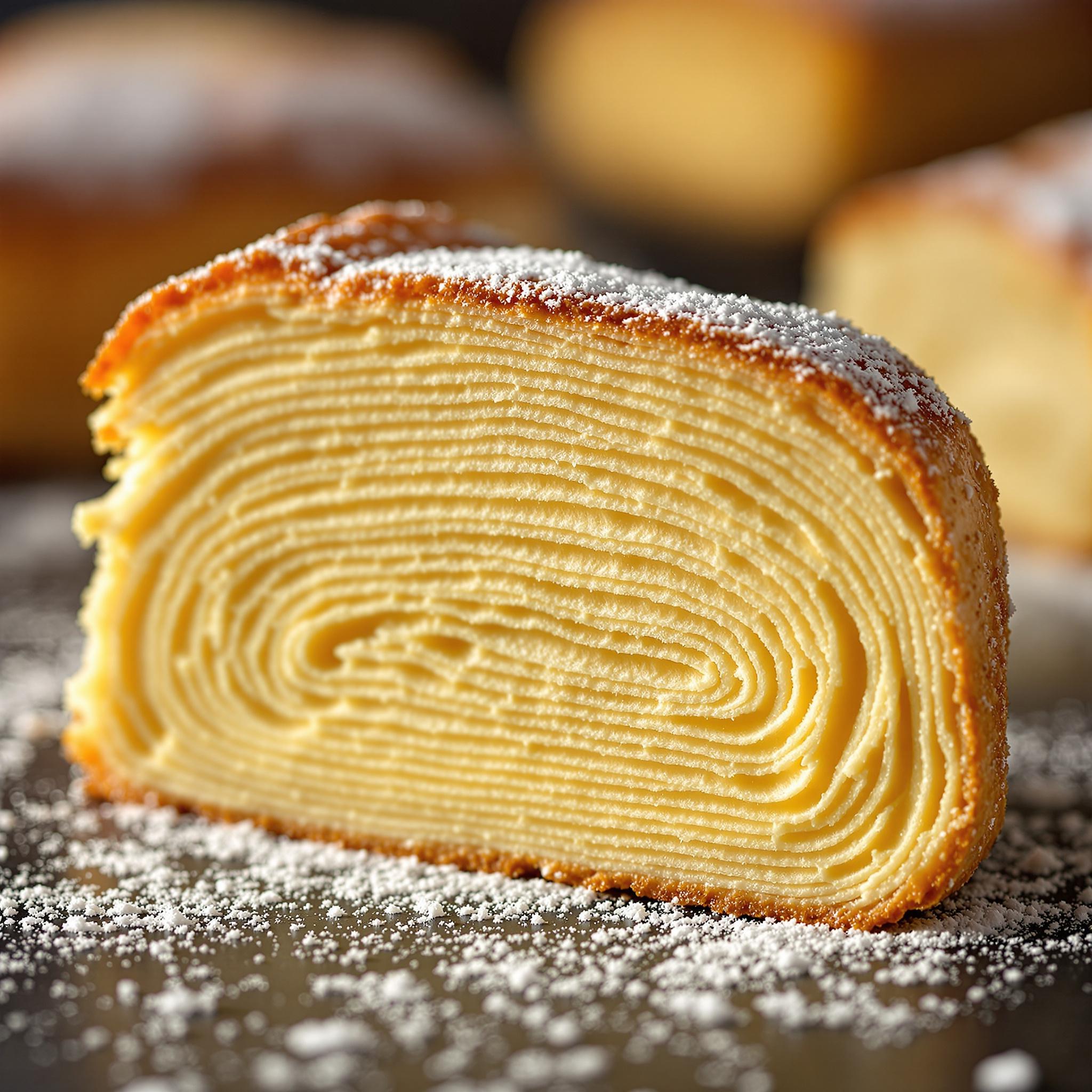Introduction to the Delightful Pâte Brisée
There’s something magical about creating a buttery, flaky crust from scratch. Today, we’re diving into the world of Pâte Brisée, a classic French shortcrust pastry that forms the foundation for countless sweet and savory dishes. Whether you’re making a quiche, tart, or fruit pie, this versatile dough is your secret weapon. I first tried this recipe during a baking class in Paris, and it has since become my go-to for family gatherings. The simplicity of its ingredients and the elegance of its results make Pâte Brisée an absolute gem in any home cook’s repertoire.
The Origins of Pâte Brisée: A Taste of Tradition
Pâte Brisée has deep roots in French cuisine, where it’s cherished for its delicate texture and neutral flavor. Unlike its richer cousin, puff pastry, this shortcrust dough is made with just a few basic ingredients: flour, butter, water, and a pinch of salt. Its history can be traced back to medieval Europe, where bakers developed simple yet effective techniques to create sturdy yet tender crusts. Over time, variations like savory shortcrust pastry or gluten-free Pâte Brisée alternatives have emerged, catering to modern tastes and dietary needs. For me, mastering this recipe felt like unlocking a piece of culinary heritage.
Why You’ll Love This Flaky Pastry Recipe
This Pâte Brisée recipe stands out because it’s both easy to prepare and incredibly versatile. It doesn’t require advanced skills or exotic ingredients, making it perfect for beginners. Plus, the buttery aroma that fills your kitchen while you bake is utterly irresistible. Whether you’re aiming for a golden-brown crust for a savory dish or a crisp base for a fruity dessert, this dough delivers every time. Trust me; once you try it, you’ll never settle for store-bought again!
Perfect Occasions to Prepare Pâte Brisée
Pâte Brisée shines on so many occasions. Whip it up for a cozy Sunday brunch paired with a spinach-and-cheese quiche. Or wow your guests at a dinner party with an elegant apple tart. During holidays, this dough becomes invaluable for festive pies and tarts. Even casual weeknights call for its charm—imagine serving a warm slice of cherry pie fresh from the oven. No matter the setting, homemade shortcrust pastry adds a touch of sophistication to any meal.
Ingredients for Your Perfect Pâte Brisée
- 1 ¼ cups all-purpose flour
- ½ teaspoon salt
- ½ cup unsalted butter, chilled and cubed
- 3-4 tablespoons ice-cold water
Substitution Options for Flexibility
- Use gluten-free flour for a gluten-free Pâte Brisée alternative.
- Replace butter with vegan margarine for a dairy-free version.
- Add a teaspoon of sugar if using the dough for sweet recipes.
Preparation: Step-by-Step Guide to Mastering Pâte Brisée
Step 1: Combine Dry Ingredients
Start by whisking together the flour and salt in a large mixing bowl. This ensures even distribution of the seasoning throughout the dough. Imagine the soft, powdery texture as you sift the flour—it sets the stage for the buttery layers ahead. Pro tip: Keep all your ingredients cold to achieve that signature flakiness.
Step 2: Incorporate Butter
Next, add the chilled, cubed butter to the flour mixture. Use your fingertips or a pastry cutter to blend until the mixture resembles coarse crumbs. Think of the satisfying crunch as the butter breaks down, leaving behind tiny pockets of fat that will later create those dreamy layers. Don’t overwork it—less is more here!
Step 3: Add Water Gradually
Sprinkle the ice-cold water, one tablespoon at a time, into the mixture. Gently mix with a fork until the dough begins to come together. You want it to hold its shape when pressed but not feel sticky. Visualize the smooth, pliable dough forming under your hands—it’s almost ready to transform into something delicious.
Step 4: Chill the Dough
Shape the dough into a disk, wrap it tightly in plastic wrap, and refrigerate for at least 30 minutes. This resting period allows the gluten to relax, ensuring a tender result. Picture the cool, firm dough waiting patiently in the fridge, ready to be rolled out for its grand debut.
Chef’s Tip for Perfect Pâte Brisée
To elevate your Pâte Brisée, grate frozen butter directly into the flour instead of cubing it. This technique creates an even distribution of fat, resulting in extra flaky layers. Trust me, it’s a game-changer!
Time Required for Preparation
- Prep Time: 15 minutes
- Resting Time: 30 minutes
- Total Time: 45 minutes
Nutritional Information
- Calories per serving: 150
- Protein: 2g
- Fat: 10g
- Carbohydrates: 12g
Extra Information About Pâte Brisée
Did you know that Pâte Brisée translates to “broken dough” in French? The name refers to the crumbly texture achieved through careful handling. It’s a subtle nod to the artistry involved in crafting this timeless pastry.
Necessary Tools for Success
- Large mixing bowl
- Pastry cutter or fingertips
- Rolling pin
- Plastic wrap
Storage Instructions
Once prepared, Pâte Brisée can be stored in the refrigerator for up to three days. Wrap it tightly in plastic wrap to prevent drying out. For longer storage, freeze the dough for up to three months. When freezing, divide it into individual portions for convenience. To thaw, simply transfer it to the fridge overnight. Proper storage ensures your dough stays fresh and ready to use whenever inspiration strikes.
Tips and Tricks for Better Results
- Keep everything cold—the colder the better!
- Avoid overworking the dough to maintain flakiness.
- Roll the dough between two sheets of parchment paper to prevent sticking.
Serving Suggestions
- Top with seasonal fruits for a rustic galette.
- Fill with creamy custard for a decadent tart.
Healthier Alternatives for Pâte Brisée
If you’re looking to lighten up this classic recipe, consider these six variations:
- Whole Wheat Version: Substitute half the all-purpose flour with whole wheat flour for added fiber.
- Olive Oil Option: Replace butter with olive oil for a heart-healthy twist.
- Low-Fat Adaptation: Use reduced-fat butter and increase the water slightly.
- Vegan Variant: Swap butter for coconut oil and use plant-based milk.
- Spelt Flour Choice: Opt for spelt flour for a nuttier flavor and higher protein content.
- Almond Flour Blend: Mix almond flour with regular flour for a gluten-reduced option.
Common Mistakes to Avoid
Mistake 1: Overworking the Dough
Overhandling the dough activates too much gluten, leading to a tough crust. Instead, handle it minimally and stop mixing as soon as it comes together. Pro tip: Use a light touch and let the dough rest before rolling.
Mistake 2: Skipping the Resting Period
Rushing the process by skipping the chilling step compromises the texture. Always allow the dough to rest—it relaxes the gluten and firms up the butter, essential for flakiness.
Mistake 3: Using Warm Ingredients
Warm butter or water melts the fat prematurely, affecting layer formation. Ensure all ingredients are icy cold for best results.
Frequently Asked Questions
Can I Make Pâte Brisée Ahead of Time?
Absolutely! You can prepare the dough up to three days in advance and store it in the fridge. Just remember to wrap it well to avoid drying out.
What’s the Difference Between Pâte Brisée and Puff Pastry?
Pâte Brisée is simpler and contains less butter than puff pastry, making it quicker to prepare. While both are flaky, puff pastry involves folding and laminating for dramatic rise.
Is Pâte Brisée Suitable for Sweet Recipes?
Yes! Simply add a teaspoon of sugar to the dough for desserts like fruit tarts or pies.
How Do I Prevent My Dough from Sticking?
Roll it between two sheets of parchment paper or lightly dust your surface with flour.
Can I Freeze Pâte Brisée?
Definitely! Freeze it for up to three months. Thaw overnight in the fridge before using.
Why Does My Crust Shrink During Baking?
Shrinking often occurs due to overworking the dough or insufficient resting time. Chill the dough properly and avoid stretching it while lining the pan.
What Can I Use Instead of Butter?
Vegan margarine or coconut oil works well as substitutes for butter.
Do I Need a Food Processor?
No, though it speeds things up. You can easily make Pâte Brisée by hand with a pastry cutter or your fingers.
How Thick Should I Roll the Dough?
Aim for about ⅛ inch thickness for optimal texture and structure.
Can I Add Herbs to the Dough?
Yes! Fresh herbs like thyme or rosemary pair beautifully with savory dishes.
Conclusion
With its rich history, versatility, and ease of preparation, Pâte Brisée deserves a permanent spot in your recipe collection. Whether you’re baking for loved ones or indulging yourself, this dough promises delightful results every time. So grab your apron, gather your ingredients, and let’s get baking—you won’t regret it!

Equipment
- Large mixing bowl
- Pastry cutter or fingertips
- Rolling pin
- Plastic wrap
- Refrigerator
Ingredients
- 1 ¼ cups all-purpose flour
- ½ teaspoon salt
- ½ cup unsalted butter, chilled and cubed
- 3-4 tablespoons ice-cold water
Instructions
- Start by whisking together the flour and salt in a large mixing bowl. Keep the ingredients cold for better flakiness.
- Add the butter to the flour mixture. Use a pastry cutter or your fingertips to blend until it resembles coarse crumbs.
- Sprinkle ice-cold water, one tablespoon at a time, into the mixture. Mix gently until dough starts to form.
- Shape the dough into a disk, wrap it in plastic wrap, and refrigerate for at least 30 minutes.


